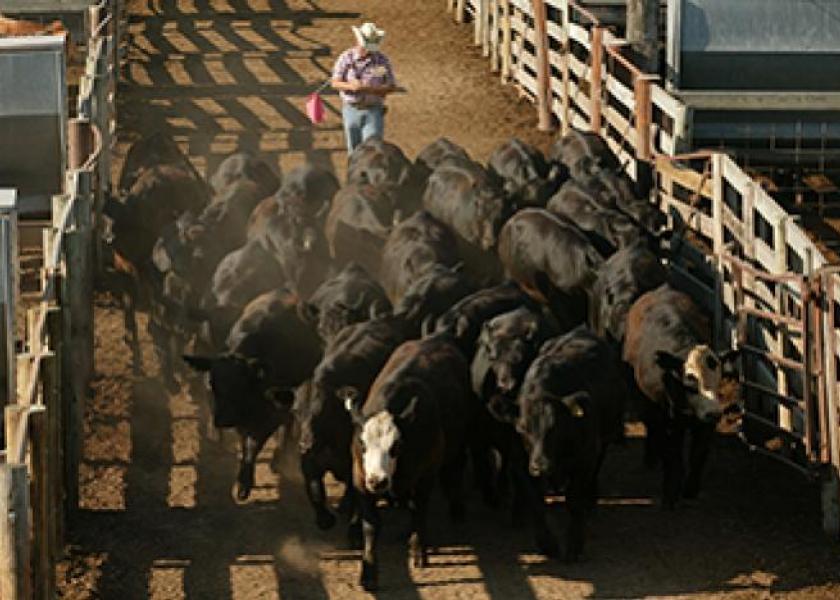COF Confirms Heavy Front-end Numbers, Tighter Feeder Cattle Supply

USDA’s Cattle on Feed report for Feb. 1, released on Friday, fell largely within pre-report estimates and the report was not expected to create any additional near-term market volatility. Yet a closer analysis finds heavy front-end numbers along with signals the feeder cattle supply is tightening.
Still, USDA’s count found the total on-feed inventory at 12.999 million head, up 1.2% from 2021 and the monthly inventory found in the data series that dates to 1996. Analysts say the large inventory was the result of slaughter disruptions during January which produced a marketings number of 1.773 million head, down 3% from last year despite an additional business day.
The report also confirmed the supply of cattle is tightening, which is viewed as positive for feeder cattle prices in 2022. The number of cattle placed on feed was 1.999 million head, down 1.2% compared to a year ago.
“Feeder cattle sales during the four January weeks were down by double digits compared to the same period a year ago, offering an early signal that the flow of cattle into feedlots was slowing down,” said Altin Kalo, Steiner Consulting Group senior analyst.
Placement of cattle into feedlots were lower despite drought conditions in some areas and the sharp rally in fed cattle futures the last half of January.
“The supply of feeder cattle outside feedlots is significantly lower than a year ago and this will continue to limit placements and constrain on-feed inventories in the second half of 2022,” Kalo said.
Higher feed prices also provide a significant encouragement for producers to hold cattle on pastures to maximize gains before sending them to feedlots.
“But strong as this incentive is, drought and feed availability remain key drivers,” Kalo said. “As weather conditions improve into spring – still a big wild card – placements are expected to decline.”
Increases in on-feed inventories were found in the Central Plains where Kansas and Texas reported a 200,000 head increase from their 5-year averages. Colorado reported a 116,000 head increase and Colorado saw a 102,000 head increase over the 5-year average.
The inventory of market-ready cattle remains a near-term concern. The inventory of cattle that have been on feed for more than 120 days is estimated at 4.255 million head, 2.9% lower than a year ago but 454,000 head of 11.9% higher than the 5-year average, Kalo said. The inventory of cattle with more than 150 days on feed is calculated at 2.150 million head, 2.9% lower than a year ago but 379,000 head or 21.4% higher than the 5-year average.
“The slowdown in slaughter during January negatively impacted the flow of cattle and front end increased by more than earlier expected,” Kalo said. “This also helps explain why fed cattle values did not go anywhere for much of the last few weeks even as wholesale beef prices spiked.”
Fed cattle weights have started to decline, “and will continue to do so in the next three months as feedlots become more current but also due to seasonal factors,” Kalo said. “The key remains the ability of packers to both slaughter and fabricate going into the second quarter demand period.”







